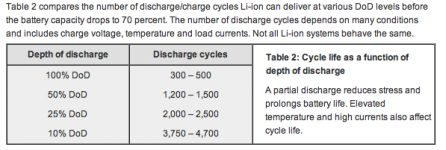i am a relatively new user of macbook mid 2012 (well sort of, it has been only 14 weeks as indicated in the pic) http://i.imgur.com/6LH5mn4.png
14 weeks
52 cycles
throughout this time i have been charging it to 90% and letting it go as low as 20%
learnt about the method of cycles, 50% one consumes today and the other 50 the very next day will day a single cycle, while other users keep the cycle load as low as possible, It has dawned on me that I have been over-adding cycles
basically I use my mac like 5, 6 or even 8 hours a day
some sites say that I shouldn`t keep it plugged and let it use on the battery, others say frequent use on battery can shorten its battery`s life
like really I don`t know what the best best thing to do (((
(((
14 weeks
52 cycles
throughout this time i have been charging it to 90% and letting it go as low as 20%
learnt about the method of cycles, 50% one consumes today and the other 50 the very next day will day a single cycle, while other users keep the cycle load as low as possible, It has dawned on me that I have been over-adding cycles
basically I use my mac like 5, 6 or even 8 hours a day
some sites say that I shouldn`t keep it plugged and let it use on the battery, others say frequent use on battery can shorten its battery`s life
like really I don`t know what the best best thing to do




